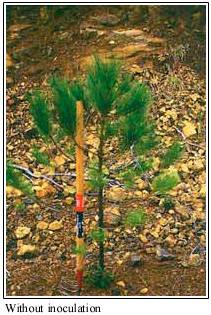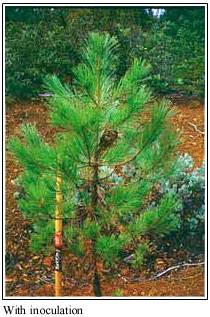Vesicular
arbuscular mycorrhizae (often more conveniently called VA mycorrhizae, or VAM), affect everything from nutrient uptake to inter-species
communication in plants. VA mycorrhizae are the most common of a group
of symbiotic fungi that infect plant roots. Because VA mycorrhizae are
so common and so important, they have been rather intensely studied. A
particular area of interest to me is how VA mycorrhizal symbiosis is different
in aquatic plants (hydrophytes) as opposed to terrestrial plants. Mycorrhizal aquatic
plants have not been thoroughly studied, and this web site aims to summarize
some of the knowledge that does exist. After a brief introduction to the
physiology behind VA mycorrhizae in terrestrial systems and a summary of
the research leading up to the discovery of how widespread VA mycorrhizae
are in aquatic systems, this site moves to a look at the problems and benefits
associated with being mycorrhizal and aquatic. Techniques for seeing mycorrhizae
largely hidden by the root tissue surrounding them are compared, and finally
recent thoughts on the advantages and disadvantages of aquatic plant susceptibility to mycorrhizal infection are summarized and related to my research and hypotheses
about the ecological effects of VA mycorrhizae on aquatic plants.
This web site was created in partial fulfillment of the graduation requirements
for a degree from the Kenyon College biology department, in fall of 1999. Text and images
may be freely used and copied as long as credit is given to the author:
Laura Marx if not specified, original authors and photographers when listed.
Questions, comments, and observations should be sent to Laura Marx at marxl@kenyon.edu.


Captions for the images included in this site will appear when you move your mouse over a picture. There is no need to click on the image. Words found in the text of the
following pages that are marked in yellow may not be familiar to some readers.
Click on a yellow word to see
it defined on the left side of the screen. To return the table of contents
to the left side of the screen, simply click on the "back to contents" button in the left frame. This feature works with most versions of Netscape and
Internet Explorer, and works best if you have your web browser in a full-screen
window.



